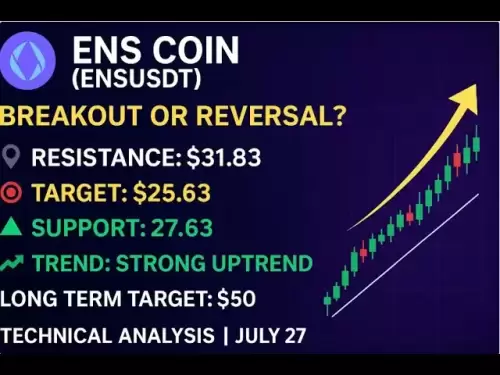-
 Bitcoin
Bitcoin $117900
0.31% -
 Ethereum
Ethereum $3766
0.28% -
 XRP
XRP $3.176
-0.31% -
 Tether USDt
Tether USDt $1.000
0.00% -
 BNB
BNB $795.6
1.51% -
 Solana
Solana $186.8
-1.09% -
 USDC
USDC $0.9999
-0.01% -
 Dogecoin
Dogecoin $0.2353
-1.33% -
 TRON
TRON $0.3226
1.49% -
 Cardano
Cardano $0.8172
-1.08% -
 Sui
Sui $4.178
3.06% -
 Hyperliquid
Hyperliquid $43.05
-3.39% -
 Stellar
Stellar $0.4367
-0.57% -
 Chainlink
Chainlink $18.62
1.47% -
 Hedera
Hedera $0.2828
6.63% -
 Bitcoin Cash
Bitcoin Cash $584.7
5.65% -
 Avalanche
Avalanche $24.81
2.53% -
 Litecoin
Litecoin $112.8
-0.88% -
 UNUS SED LEO
UNUS SED LEO $8.975
-0.08% -
 Shiba Inu
Shiba Inu $0.00001395
-1.07% -
 Toncoin
Toncoin $3.285
-1.05% -
 Ethena USDe
Ethena USDe $1.001
0.01% -
 Polkadot
Polkadot $4.123
0.76% -
 Uniswap
Uniswap $10.49
-0.18% -
 Monero
Monero $326.5
0.14% -
 Dai
Dai $0.9999
-0.02% -
 Bitget Token
Bitget Token $4.576
0.34% -
 Pepe
Pepe $0.00001247
-1.55% -
 Cronos
Cronos $0.1400
3.77% -
 Aave
Aave $295.1
-0.73%
What is the role of USDT in the cryptocurrency market?
USDT, a stablecoin pegged to the US dollar, facilitates crypto trading and acts as a bridge between fiat and cryptocurrencies, but concerns about its reserves and transparency create regulatory uncertainty and market risks.
Mar 02, 2025 at 06:25 pm
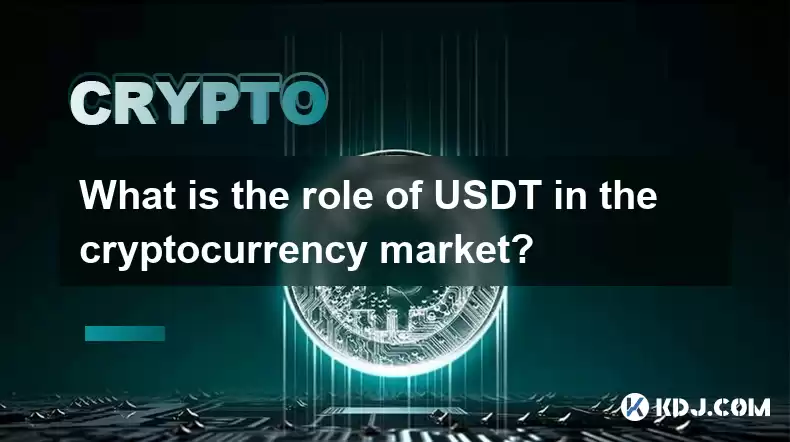
What is the role of USDT in the cryptocurrency market?
Key Points:
- USDT's primary function is as a stablecoin, pegged to the US dollar, providing a relatively stable store of value and facilitating trading within the volatile crypto market. This stability contrasts sharply with the price fluctuations of other cryptocurrencies.
- USDT's widespread adoption has made it a crucial component of the crypto ecosystem, acting as a bridge between fiat currency and cryptocurrencies. It simplifies the buying and selling process for many users.
- However, USDT's role is not without controversy. Concerns regarding its reserves and transparency have led to regulatory scrutiny and debates about its long-term stability and impact on market manipulation.
- USDT's dominance as a stablecoin has created both opportunities and risks. While it offers convenience and liquidity, its centralized nature introduces potential vulnerabilities.
The multifaceted role of USDT in the cryptocurrency market:
- USDT as a Stable Store of Value: Unlike Bitcoin or Ethereum, which experience significant price swings, Tether (USDT) aims to maintain a 1:1 peg with the US dollar. This stability makes it attractive to cryptocurrency traders and investors who want to preserve their capital during market downturns or simply need a less volatile asset to hold temporarily. Traders often use USDT to park their profits from successful trades, avoiding the risk of losing value due to market fluctuations. This "parking" function is crucial for managing risk and allowing for strategic re-entry into the market. The perceived stability also attracts users who are new to cryptocurrencies and are hesitant to invest directly in more volatile assets. They can use USDT as an intermediary step, gradually becoming more comfortable with the crypto space before investing in other digital currencies. The psychological comfort provided by USDT’s perceived stability is a significant factor in its widespread adoption. The ease of moving between fiat and crypto via USDT is another significant benefit, reducing the friction for those new to the space. However, it's crucial to remember that while USDT aims for stability, it's not completely risk-free. Fluctuations and concerns regarding its backing have historically led to temporary de-pegging events, highlighting the inherent risks associated with any stablecoin.
- USDT as a Bridge Between Fiat and Crypto: USDT serves as a vital bridge between traditional fiat currencies (like the US dollar) and cryptocurrencies. Many cryptocurrency exchanges allow users to directly buy or sell USDT using fiat currency. This simplifies the process of entering the cryptocurrency market, eliminating the need for complex peer-to-peer transactions or navigating multiple exchanges. For example, a user might first buy USDT with US dollars on an exchange, then use that USDT to purchase other cryptocurrencies like Bitcoin or Ethereum. This seamless transition makes cryptocurrencies more accessible to a broader range of users, including those who are unfamiliar with the technical complexities of the cryptocurrency space. This accessibility is a key driver of USDT's popularity and its significant role in expanding the overall cryptocurrency market. The ease of converting between fiat and USDT also facilitates quick and efficient trading strategies. Traders can readily move between different crypto assets and fiat without significant delays or added complexities. This is especially important in fast-paced trading environments where speed and efficiency are crucial. However, this ease of access also carries risks. The simplified process might mask some of the inherent risks associated with both fiat and cryptocurrency markets.
- USDT's Role in Facilitating Cryptocurrency Trading: USDT's role extends beyond simply holding value. It acts as a crucial trading pair on many cryptocurrency exchanges. Most exchanges offer trading pairs where users can buy or sell other cryptocurrencies using USDT. This liquidity is essential for efficient trading. Having a large volume of USDT trading pairs enables traders to easily and quickly execute trades without facing significant slippage or price impact. This contributes to a more liquid and efficient cryptocurrency market overall. The widespread use of USDT as a trading pair reduces the friction of exchanging between different cryptocurrencies. Instead of needing to find a direct trading pair between two altcoins, for instance, traders can often use USDT as an intermediary. This increased liquidity attracts more traders to the platform, further enhancing the exchange's overall trading volume and profitability. This network effect is a significant factor in USDT's dominance in the stablecoin market. However, this central role also raises concerns about market manipulation and the potential for systemic risk. If USDT were to lose its peg, it could trigger a cascade effect across the entire cryptocurrency market.
- USDT and the Concerns Regarding Transparency and Regulation: Despite its widespread adoption, USDT has faced significant scrutiny regarding its reserves and transparency. Concerns have been raised about whether Tether, the company behind USDT, holds sufficient US dollar reserves to back every USDT in circulation. These concerns have led to regulatory investigations and debates about the stability and long-term viability of USDT. This lack of complete transparency creates uncertainty among users and regulators alike. The potential for a loss of confidence in USDT could trigger a massive sell-off, destabilizing the cryptocurrency market. Regulatory uncertainty also poses a significant challenge for the future of USDT. Governments worldwide are grappling with how to regulate stablecoins, and the outcome of these regulatory efforts could significantly impact USDT's future. The potential for stricter regulations could limit USDT's growth and potentially even lead to its decline. The ongoing debate highlights the complexities of regulating a decentralized technology within a centralized framework.
FAQs:
Q: Is USDT truly backed 1:1 by the US dollar?
A: Tether claims a 1:1 backing, but independent audits have been inconsistent and incomplete, leading to ongoing concerns about the true nature of its reserves. While Tether publishes periodic attestations, the lack of full transparency fuels skepticism among many in the crypto community.
Q: What are the risks associated with using USDT?
A: The primary risks include the potential for de-pegging from the US dollar (meaning its value falls below $1), regulatory uncertainty, and counterparty risk associated with Tether's operations. While it aims for stability, its centralized nature introduces vulnerabilities not present in decentralized stablecoins.
Q: Are there alternatives to USDT?
A: Yes, several other stablecoins exist, including USDC, DAI, and BUSD. These stablecoins offer varying degrees of transparency and backing mechanisms, providing alternatives for users concerned about USDT's lack of complete transparency. However, each alternative also carries its own set of risks and considerations.
Q: How does USDT impact the overall cryptocurrency market?
A: USDT's widespread use significantly influences market liquidity, trading volume, and price discovery. Its stability (or lack thereof) can have a ripple effect across the entire cryptocurrency market, impacting the prices of other cryptocurrencies. Its role as a bridge between fiat and crypto is also crucial for the accessibility and growth of the broader crypto ecosystem.
Q: What is the future of USDT?
A: The future of USDT is uncertain, largely dependent on regulatory developments and the continued confidence of users. Increased transparency and stronger regulatory oversight could enhance its stability, while conversely, negative regulatory actions or loss of user trust could lead to a decline in its dominance. The evolution of the stablecoin market and the emergence of alternative solutions will also play a significant role in shaping USDT's future.
Disclaimer:info@kdj.com
The information provided is not trading advice. kdj.com does not assume any responsibility for any investments made based on the information provided in this article. Cryptocurrencies are highly volatile and it is highly recommended that you invest with caution after thorough research!
If you believe that the content used on this website infringes your copyright, please contact us immediately (info@kdj.com) and we will delete it promptly.
- Token Unlocks and Altcoin Mania: A Wild Week Ahead!
- 2025-07-28 04:30:12
- Hayden Davis's LIBRA Token: From Investment Promise to Memecoin Mayhem
- 2025-07-28 04:30:12
- AI Tokens on CoinMarketCap: The New Millionaire Maker?
- 2025-07-28 04:35:18
- BONK Price, Solana Meme Coin Mania, and PENGU Pressure: What's the Haps?
- 2025-07-28 03:50:12
- Bitcoin, Ruvi AI, and CoinMarketCap: Navigating the Future of Crypto
- 2025-07-28 02:30:12
- Ethereum ETF Mania & BNB's Breakout: A New Yorker's Crypto Take
- 2025-07-28 03:50:12
Related knowledge

How to choose a reliable USDT exchange service provider? How to identify?
Jun 12,2025 at 03:15pm
Understanding the Role of USDT in Cryptocurrency TradingUSDT (Tether) is one of the most widely used stablecoins in the cryptocurrency market. It is d...
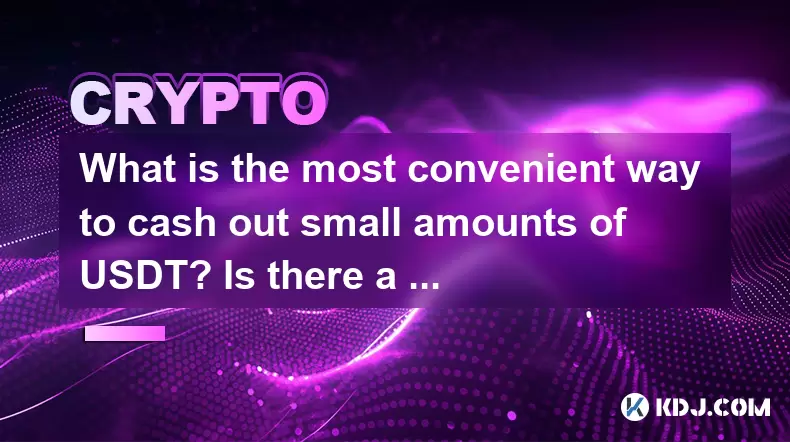
What is the most convenient way to cash out small amounts of USDT? Is there a shortcut?
Jun 11,2025 at 11:00pm
Understanding the Need to Cash Out Small USDT AmountsCashing out small amounts of USDT can be a challenge for many crypto users. Traditional methods o...

How to transfer USDT to PayPal or international payment tools?
Jun 15,2025 at 05:28am
Understanding the Basics of USDT and PayPal IntegrationUSDT (Tether) is a stablecoin pegged to the US dollar, offering blockchain-based value transfer...
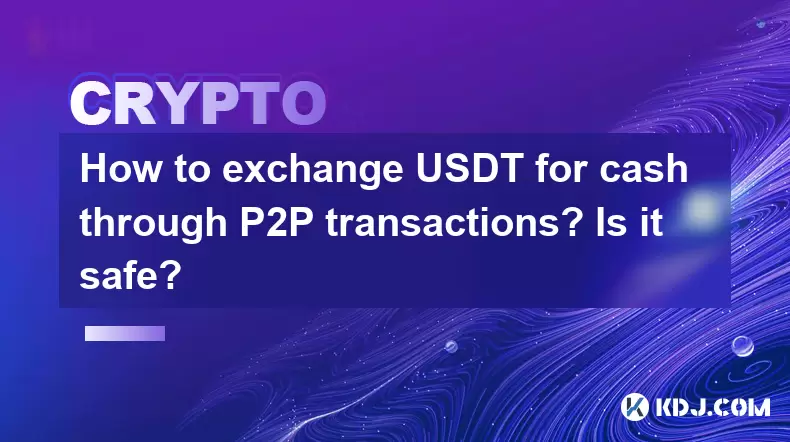
How to exchange USDT for cash through P2P transactions? Is it safe?
Jun 18,2025 at 07:56am
Understanding USDT and P2P TransactionsTether (USDT) is a stablecoin pegged to the value of the US dollar, making it a popular choice for users who wa...
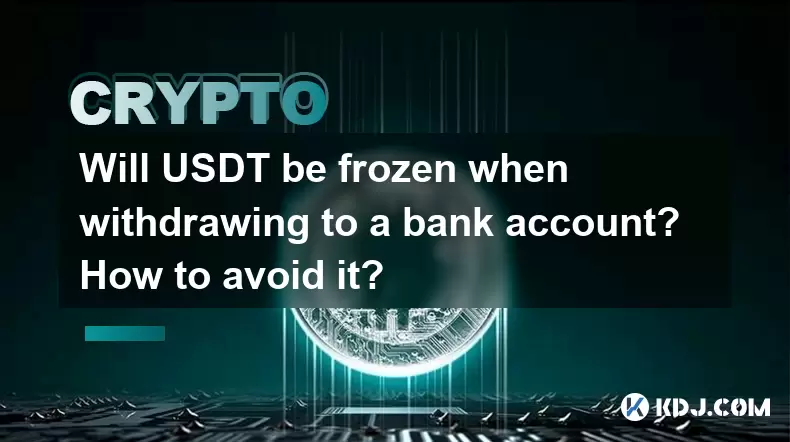
Will USDT be frozen when withdrawing to a bank account? How to avoid it?
Jun 15,2025 at 10:03am
Understanding USDT Withdrawals and Bank Account Freezing RisksWhen users decide to withdraw USDT (Tether) to a bank account, one of the most common co...

How to avoid risks when exchanging USDT for cash? What are the pitfalls?
Jun 11,2025 at 08:14pm
Understanding the Risks of Exchanging USDT for CashWhen exchanging USDT (Tether) for cash, users must be aware of the potential risks involved. As a s...

How to choose a reliable USDT exchange service provider? How to identify?
Jun 12,2025 at 03:15pm
Understanding the Role of USDT in Cryptocurrency TradingUSDT (Tether) is one of the most widely used stablecoins in the cryptocurrency market. It is d...

What is the most convenient way to cash out small amounts of USDT? Is there a shortcut?
Jun 11,2025 at 11:00pm
Understanding the Need to Cash Out Small USDT AmountsCashing out small amounts of USDT can be a challenge for many crypto users. Traditional methods o...

How to transfer USDT to PayPal or international payment tools?
Jun 15,2025 at 05:28am
Understanding the Basics of USDT and PayPal IntegrationUSDT (Tether) is a stablecoin pegged to the US dollar, offering blockchain-based value transfer...

How to exchange USDT for cash through P2P transactions? Is it safe?
Jun 18,2025 at 07:56am
Understanding USDT and P2P TransactionsTether (USDT) is a stablecoin pegged to the value of the US dollar, making it a popular choice for users who wa...

Will USDT be frozen when withdrawing to a bank account? How to avoid it?
Jun 15,2025 at 10:03am
Understanding USDT Withdrawals and Bank Account Freezing RisksWhen users decide to withdraw USDT (Tether) to a bank account, one of the most common co...

How to avoid risks when exchanging USDT for cash? What are the pitfalls?
Jun 11,2025 at 08:14pm
Understanding the Risks of Exchanging USDT for CashWhen exchanging USDT (Tether) for cash, users must be aware of the potential risks involved. As a s...
See all articles
























